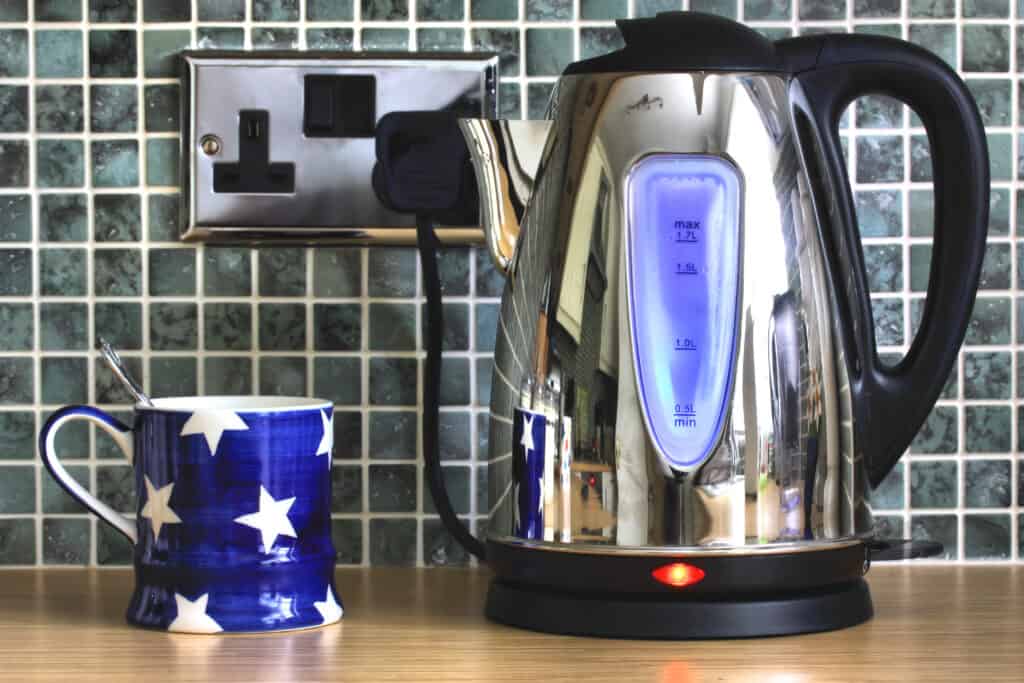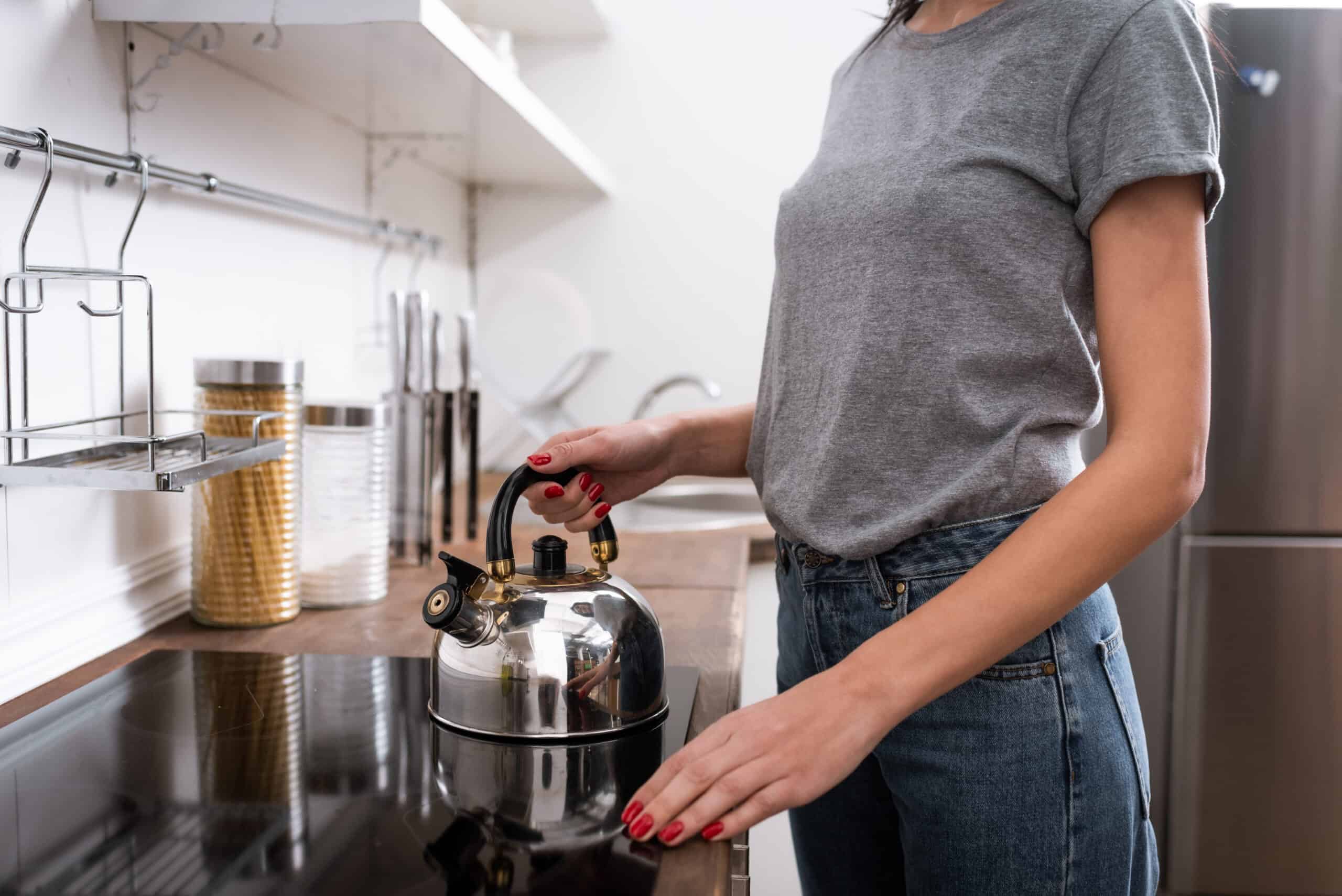Imagine yourself wanting to take a relaxing bath, but realizing you have no hot water. Don’t worry, there’s a creative solution: using kettles to fill your bath.
In this article, we will explore just how many kettles it takes to achieve a comfortable, warm bath.
Filling your bath with kettles might sound tedious, but it could be your best option if your water heater isn’t functioning.
By boiling water and carefully pouring it into the tub, you can turn an otherwise chilly experience into a cozy, relaxing soak. Keep reading to find out the best way to calculate the number of kettles needed to fill your bath to the perfect temperature.

Understanding Kettle Baths
History of Kettle Baths
Kettle baths have been around for centuries, providing a warm bathing solution during times when hot water wasn’t readily available. In the past, people would heat water over an open fire or stove and transport it to their bathtub.
Benefits
- Kettle baths allow you to enjoy a warm bath even when your hot water supply is limited or unavailable.
- They can be an energy-efficient way to bathe, as you only heat the water you need.
Drawbacks
- Filling a bathtub with kettle-boiled water can be time-consuming, as most kettles hold around 1.5 liters and a bath needs around 120 liters.
- Continuously boiling water may not be practical for everyone and can pose safety risks, such as burns or scalding.
Remember, when using kettle baths, it’s essential to take safety precautions and consider the effort involved in heating and transferring the water.
Setting up a Kettle Bath
Selecting the Right Kettles and Pans
Begin by choosing a kettle with a large capacity to minimize the number of times you need to refill it. Electric kettles are efficient in heating water quickly, taking between two and four minutes to boil. Alongside your kettle, select pans that can hold and heat significant amounts of water.
Remember that safety is paramount when handling boiling water. Opt for kettles and pans with heat-resistant handles to avoid burns or discomfort while pouring.
Choosing the Right Bathtub
The size of your bathtub dictates the quantity of water and, consequently, the number of kettle and pan refills. When selecting a bathtub, consider one with a smaller volume requiring less water to fill.
To set up your kettle bath, follow these steps:
- Fill your bathtub with a few inches of cold water to create a base.
- Boil water using your chosen kettle and pans.
- Add the boiling water to the cold water in the bathtub, making sure to mix it well for even temperature distribution.
Keep in mind that it takes multiple kettles and pans to fill an average-sized bathtub, depending on their capacity. Ensure your bathroom venting is adequate to handle the steam produced during the process. Always test the water temperature before entering the bath to avoid burns or discomfort.

Filling the Bathtub
Calculating Number of Kettles Required
To determine the number of kettles needed to fill your bathtub, first calculate your tub’s capacity. Standard bathtubs hold around 100 gallons (378 liters) of water. Next, check your kettle’s capacity, which is typically 1.7 liters. Divide your bathtub’s capacity by your kettle’s capacity. For example:
100 gallons (378 liters) / 1.7 liters ≈ 222 kettles
You’ll need approximately 222 kettles to fill your bathtub with hot water.
Timing and Technique
Begin by placing the plug in your bathtub to prevent water from draining. Start filling the bathtub with cold water, filling it only a few inches deep. Then, boil your kettle and carefully pour the hot water into the bathtub to mix with the cold water, taking care not to burn yourself.
- Step 1: Plug the bathtub
- Step 2: Fill it with a few inches of cold water
- Step 3: Boil the kettle
- Step 4: Pour hot water into the bathtub, mixing with the cold water
Keep in mind that it’s crucial to find the right balance between hot and cold water to reach your desired bath temperature. Remember that the process of boiling multiple kettles to fill your bathtub can be time-consuming, so plan accordingly.
Ensuring Safety and Comfort
Safe Usage of Electronics
When filling your bath with water from a kettle, always unplug the electric kettle before pouring the water into the bathtub. Keep electronic devices away from the water to prevent the risk of electric shock.
Preventing Accidents
Monitor the water temperature throughout the process to ensure it is at a comfortable level for bathing. To do so, you should periodically use a thermometer or cautiously test the water with your hand. If the water feels too hot or cold, adjust accordingly by adding cooler water or boiling more water in the kettle.
To provide added comfort and safety, place a nonslip bath mat at the bottom of the bathtub to prevent slips and falls. Additionally, have a towel nearby to dry your hands after testing the water temperature.
Regularly check the water level as you fill the bath, making certain not to overfill it. This helps to prevent water from spilling or splashing onto the floor, creating a slip hazard.
In summary, practicing safe and cautious habits when filling a bath with kettles is vital to ensure a comfortable and secure experience.
Enhancing the Kettle Bath Experience
Adding Bubbles and Scents
To elevate your kettle bath, consider adding bubble bath or bath salts to the water. These additions can provide a spa-like atmosphere while also offering relaxation through aromatherapy. Be sure to choose scents that you find calming or enjoyable.
A few drops of essential oils such as lavender or eucalyptus can also enhance the experience. Combine these oils with a carrier oil like coconut oil to prevent skin irritation. Add the mixture directly to the bath water.

Using Soaps and Sponges
Select a gentle, skin-nourishing soap for your kettle bath. Soaps with natural ingredients like oatmeal, aloe vera, and chamomile can help soothe your skin while you soak. A rich, moisturizing body wash may also be ideal for keeping your skin hydrated.
Incorporate a sponge, washcloth, or loofah to gently cleanse and exfoliate during your bath. Gently scrubbing your skin can help remove dead skin cells and promote circulation, leaving your skin feeling refreshed and smooth. Remember to rinse tools like sponges and loofahs thoroughly after use to prevent bacterial growth.
Alternatives to Kettle Baths
Conventional Showers
Taking a conventional shower is a time-efficient way to get clean. Adjust the water temperature to your preference and enjoy a rejuvenating wash.
Cold Showers
In case you want an alternative to hot water, consider a cold shower. Cold showers can be invigorating and offer several benefits, such as improving blood circulation and boosting alertness.
Remember, a cold shower can be a quick solution when you’re in a hurry. Try it the next time you’re running late for a job or a meeting.
For those who are not comfortable with cold showers but still want to save time, try using a pan or a container. Fill it with lukewarm water and use it to rinse yourself at a comfortable pace. This method can be an efficient alternative to filling a bathtub with kettles of hot water.





